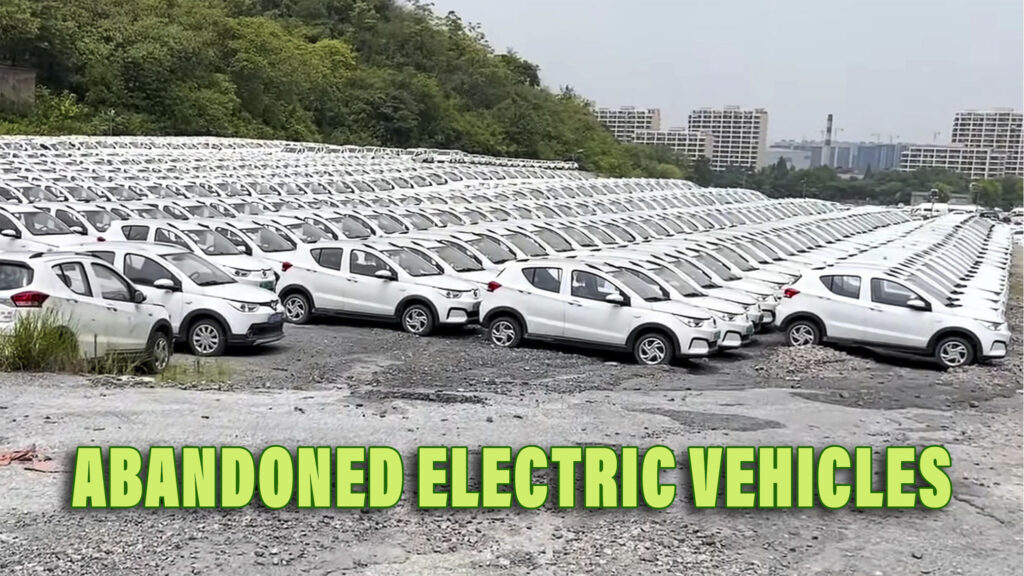
Footage from China showing fields with hundreds or thousands of abandoned cars, predominantly EVs, recently sparked the interest of the internet, with viewers wondering how did these vehicles end up stacked in graveyards and what will happen to them in the future.
Those car-filled spaces are not an isolated incident as they have been spotted in dozens of Chinese cities from as early as 2019. They host large numbers of identical and often fairly modern electric vehicles which are parked very close to each other in groups. In most cases, the EVs show signs of abandonment with plants growing around them and piles of dust covering their usually white-painted exterior.
More: China Surges Past Japan As World’s Top Car Exporter In Q1 2023
The short answer to this mystery is the spectacular fall of the once-booming EV car-sharing market in China, similar to what happened with the bike-sharing schemes a few years ago. Thousands of ride-sharing companies were created during the past decade taking advantage of the generous government incentives which were slashed in 2019. This change in combination with other factors, including the lack of free parking spaces and the much-improved newer generation of EVs that made old models obsolete, forced the majority of the ambitious startups into bankruptcy.
On the brighter side, the failed ride-sharing model reportedly accelerated the development of EVs and their greater adoption by the Chinese population. The result of this growth is China becoming the largest market in the world, accounting for 60% of the global EV fleet. Still, the number of local EV makers has been greatly reduced from close to 500 in 2019 to around 100 in 2023 showing that only serious players can survive.
Bloomberg fittingly describes the abandoned EVs as “a striking representation of the excess and waste that can happen when capital floods into a burgeoning industry, and perhaps also an odd monument to the seismic progress in electric transportation over the last few years.”
As confirmed by a recent YouTube video from Inside China Auto, most of the abandoned vehicles come from used EV fleets. A fitting example is the pictured BJEV EC3, a fully electric city car from BAIC that was introduced in 2017 with a focus on car sharing. This vehicle is now considered outdated, with its used value plummeting due to competitively-priced and much newer micro EVs that have flooded the Chinese market.
Besides the fleets of defunct companies, the video proves that these graveyards also serve as the temporary resting place for brand-new examples of yet-unregistered EVs, patiently waiting to be sold. In this particular field, we can see a bunch of Toyota bZ4x crossovers and VW ID.3 hatchbacks without license plates, parked next to piles of used taxi sedans from Geely and BAIC and a few crashed vehicles. Other sources show unsold EVs from Changan shortly after the start of the price war with Tesla. Unlike the used fleets, those brand-new vehicles will hopefully find new owners before they get damaged from being left outside.
Hopefully, local authorities will eventually find a new use for the unwanted or confiscated vehicles, possibly reusing their batteries or recycling the precious materials used in their production. In a world hit by climate change and poverty, it is really sad watching all this energy and resources go to waste.
